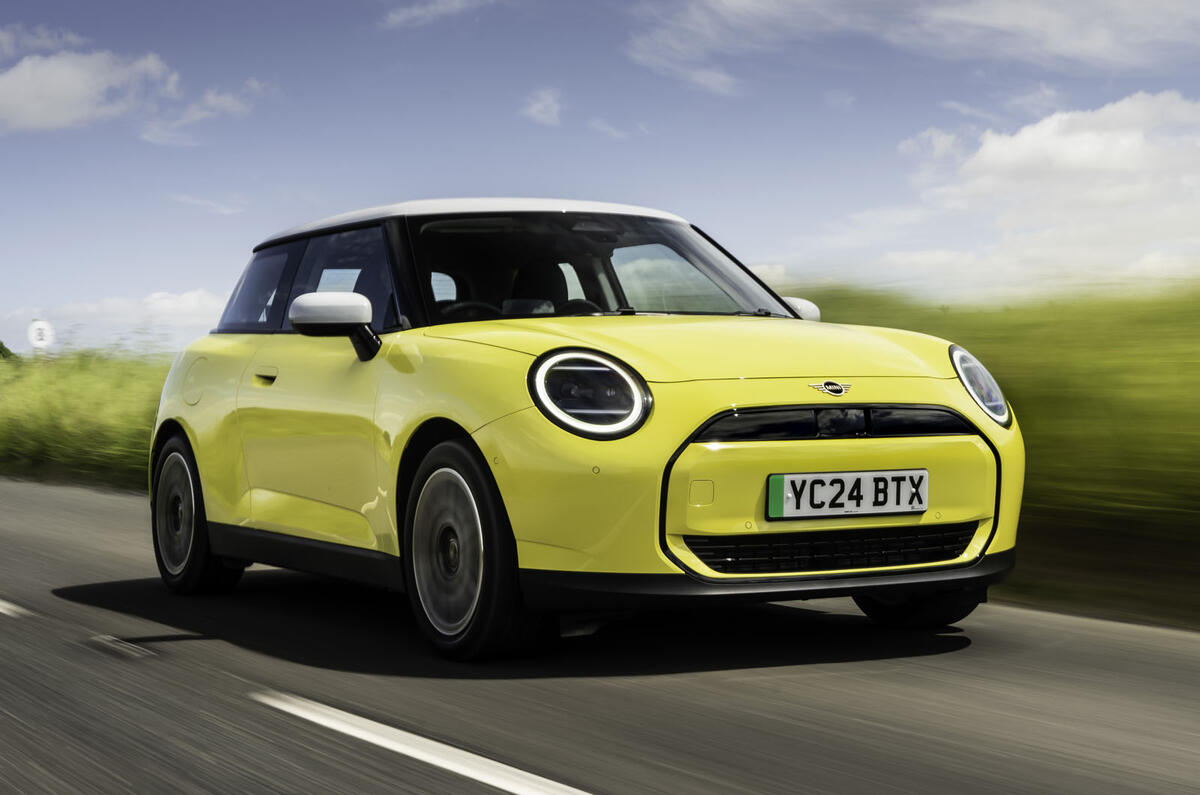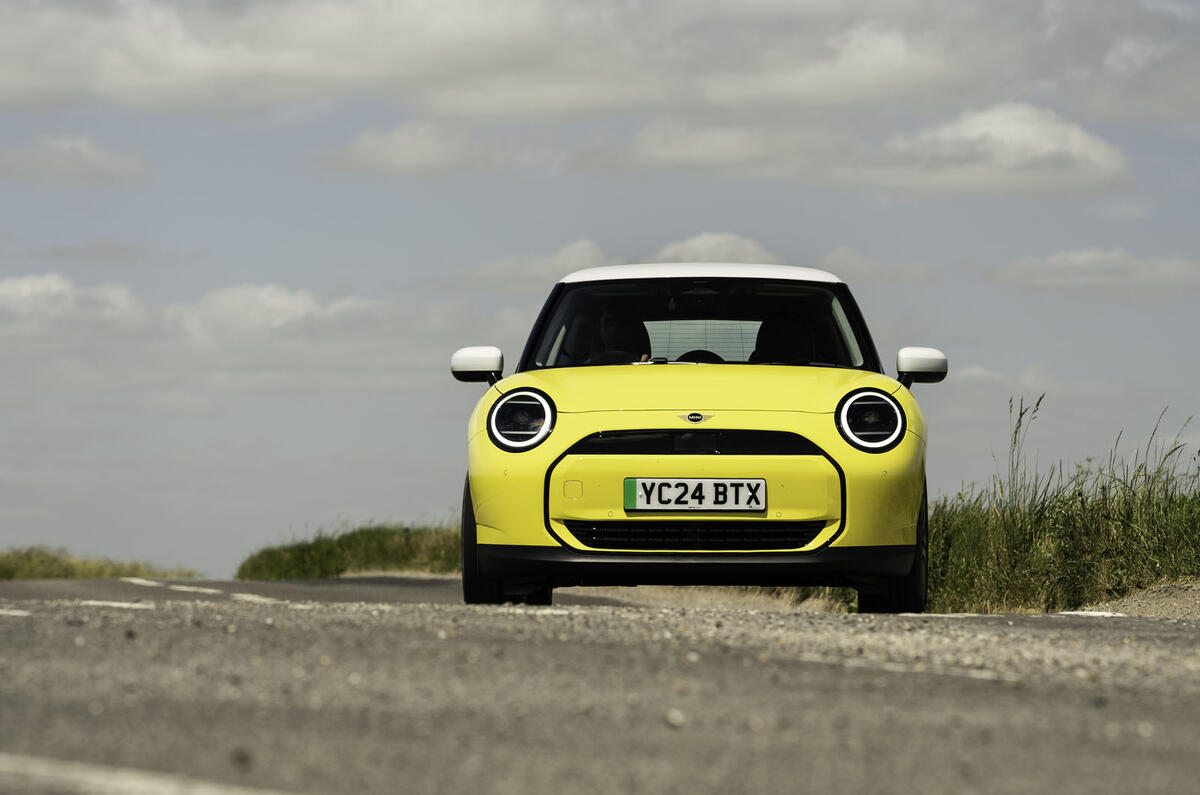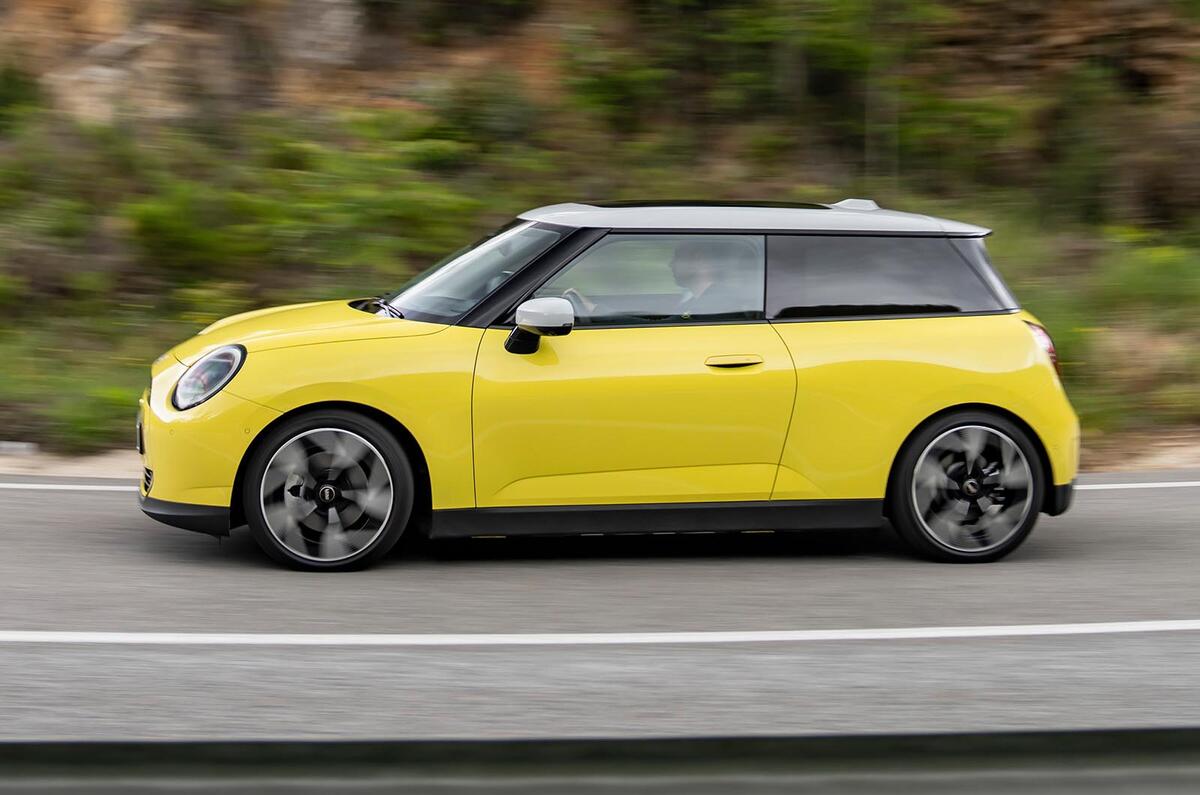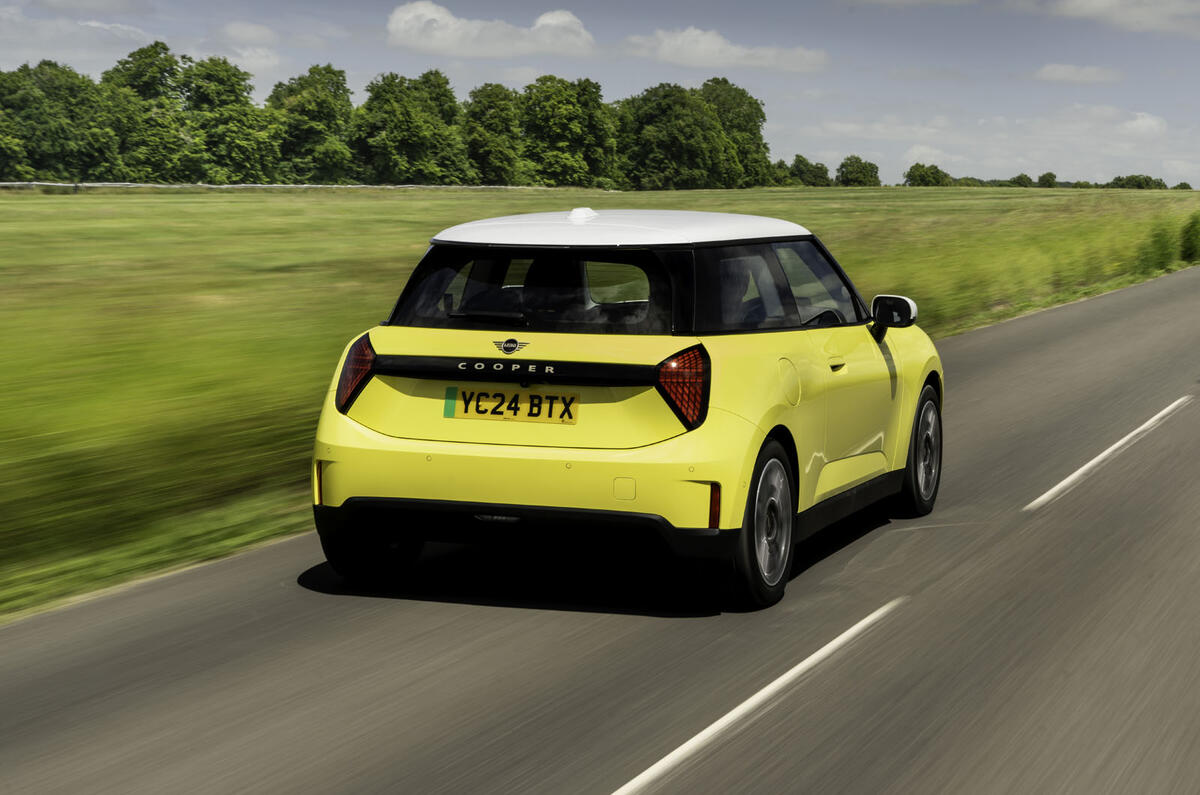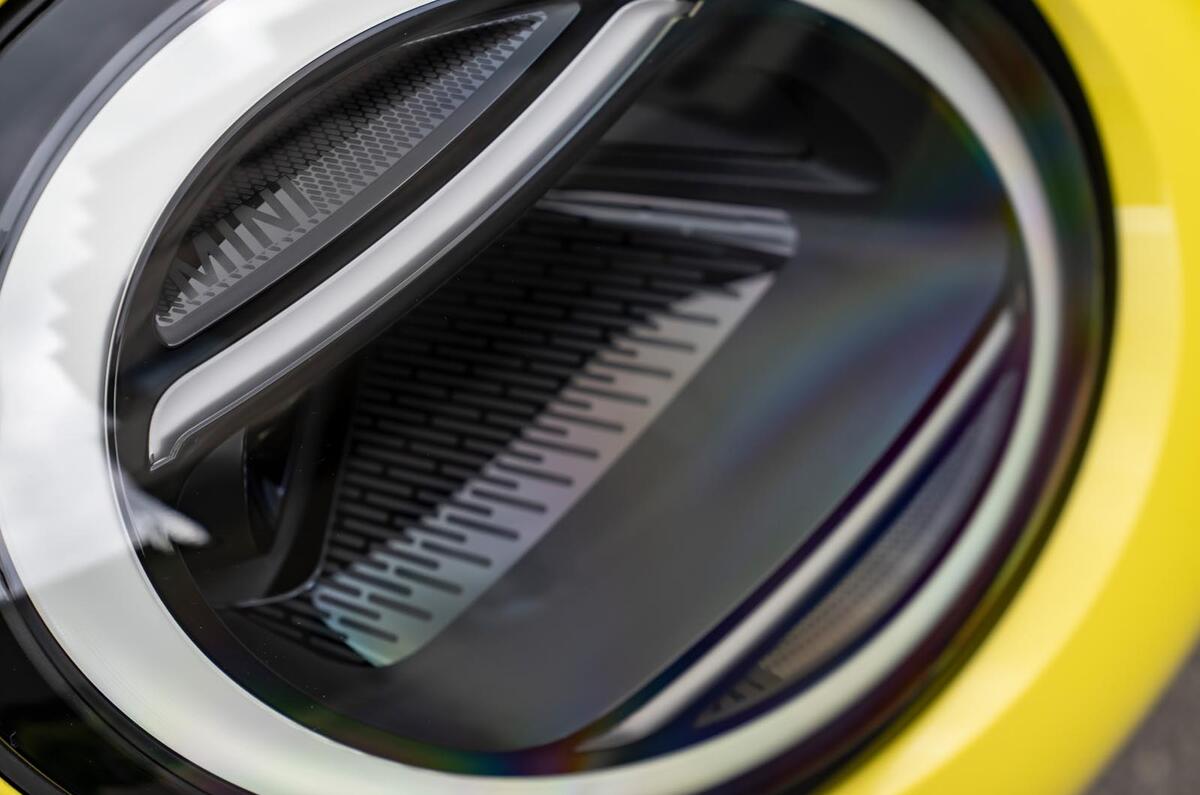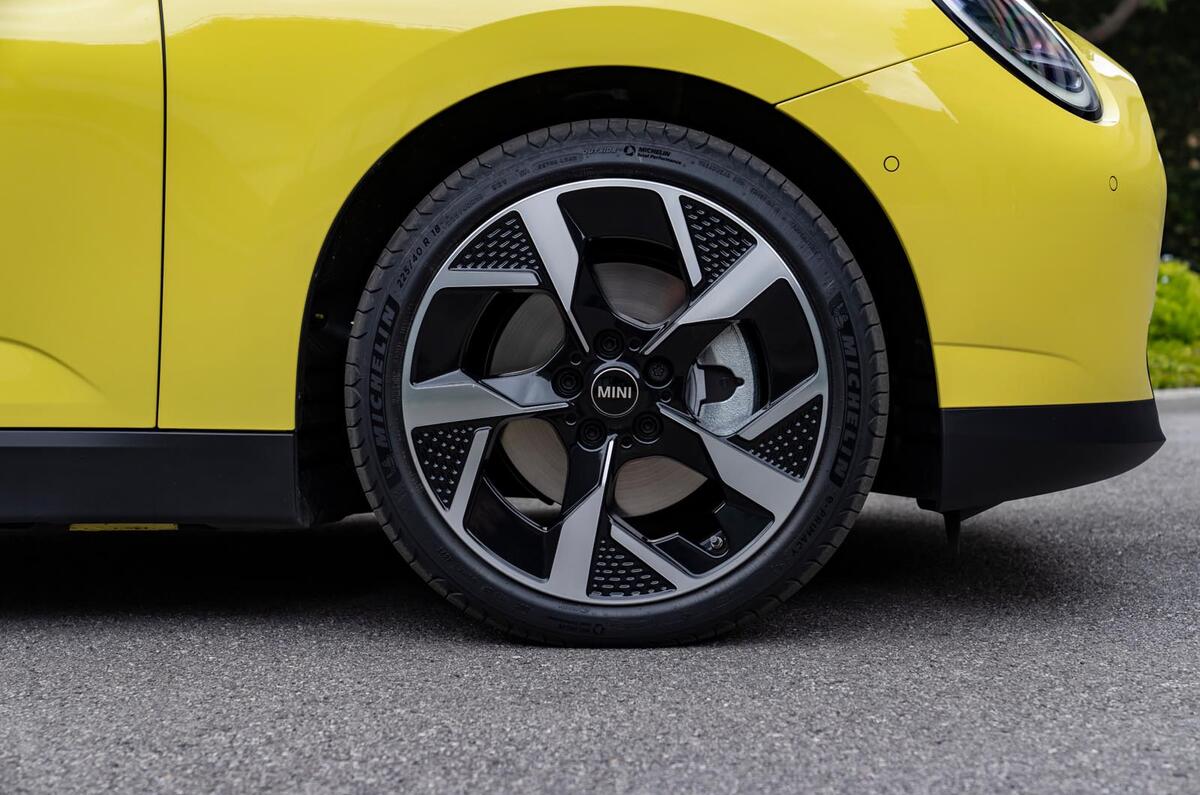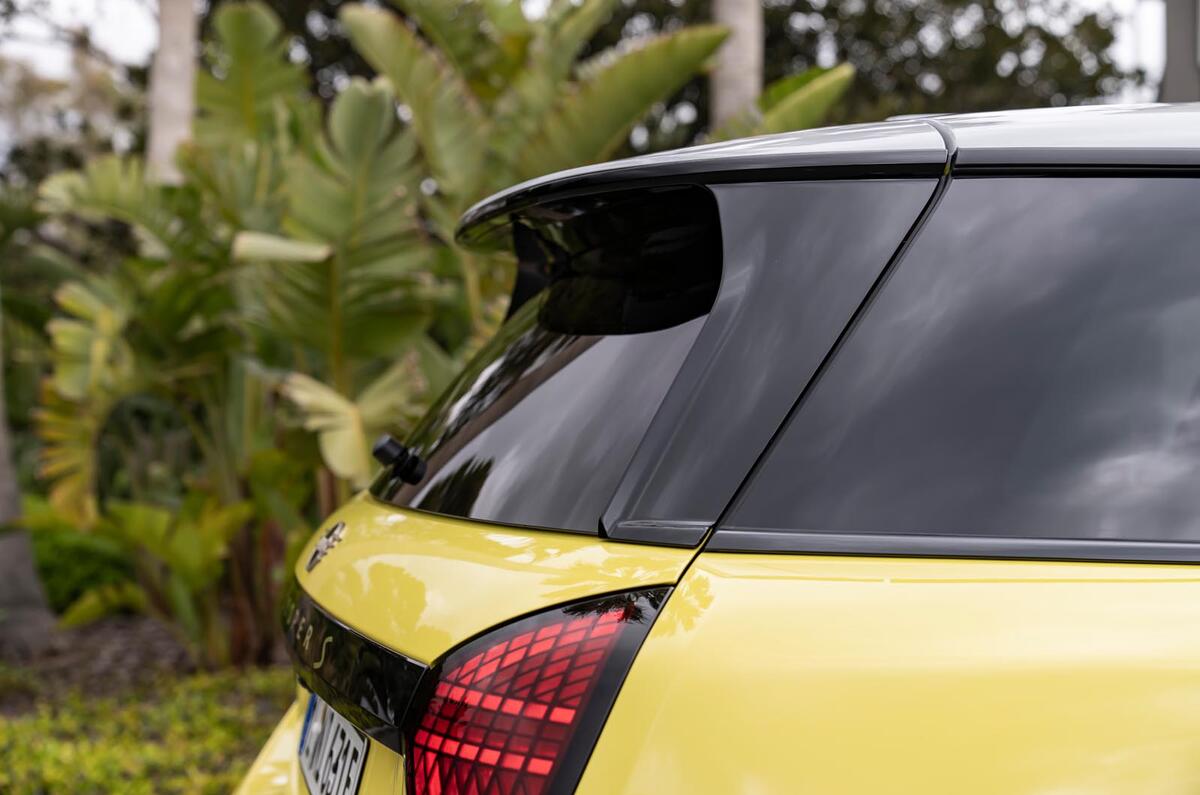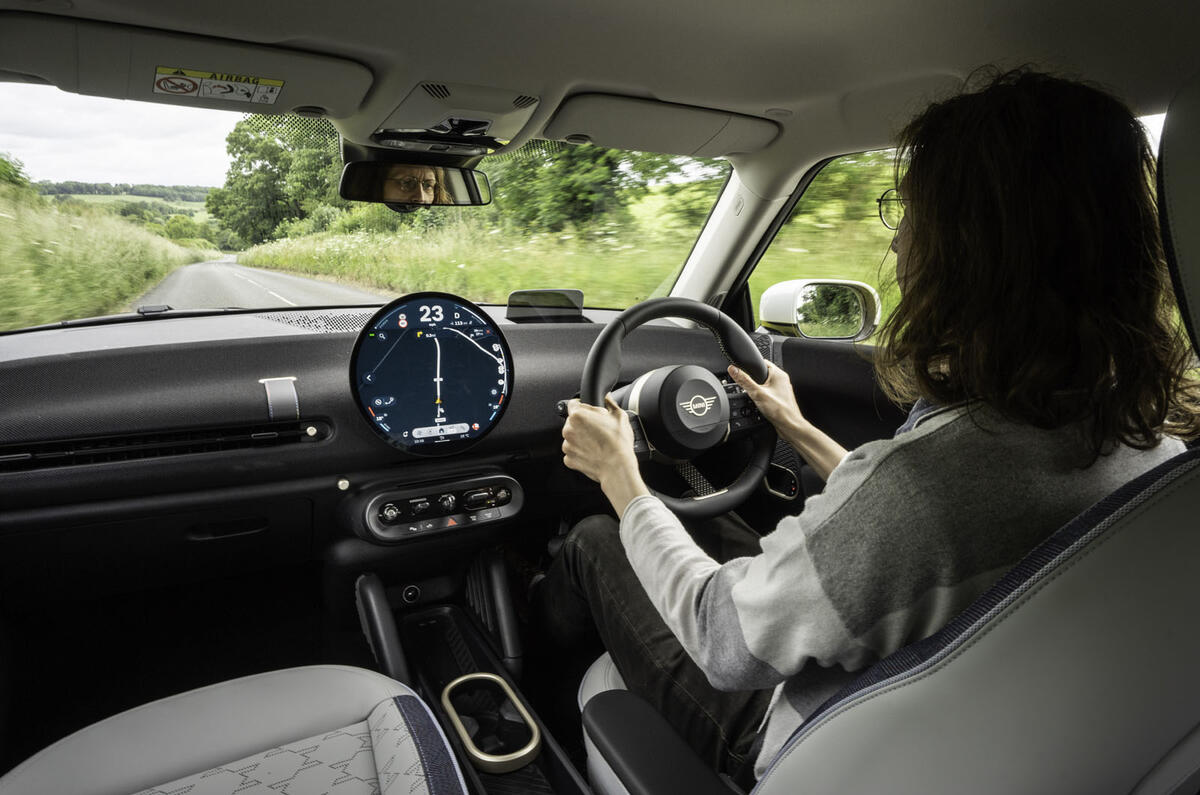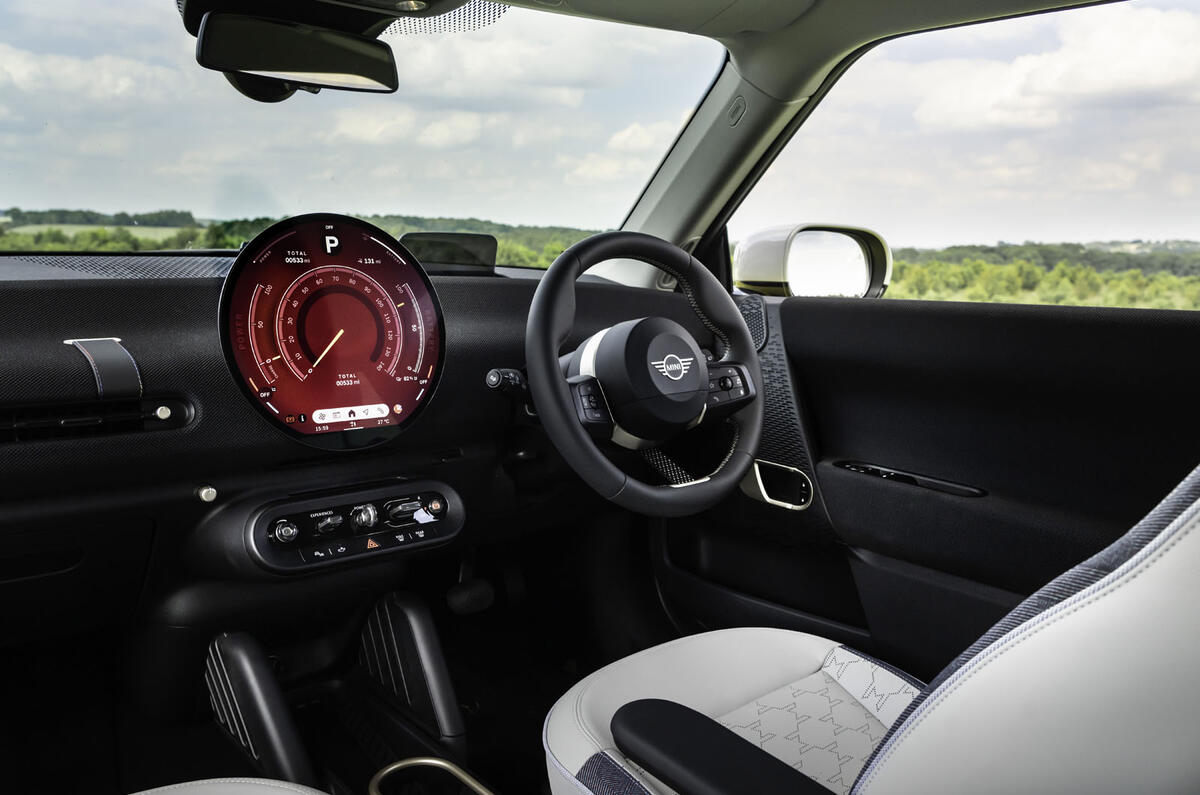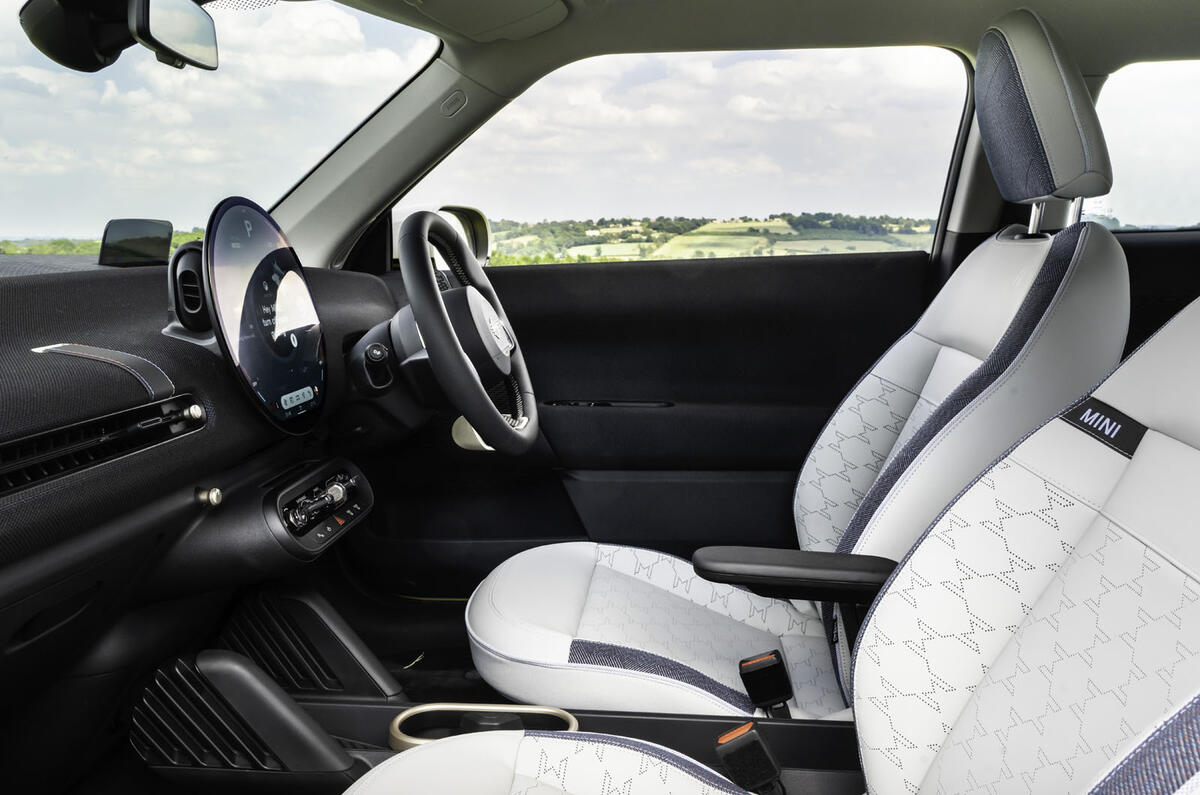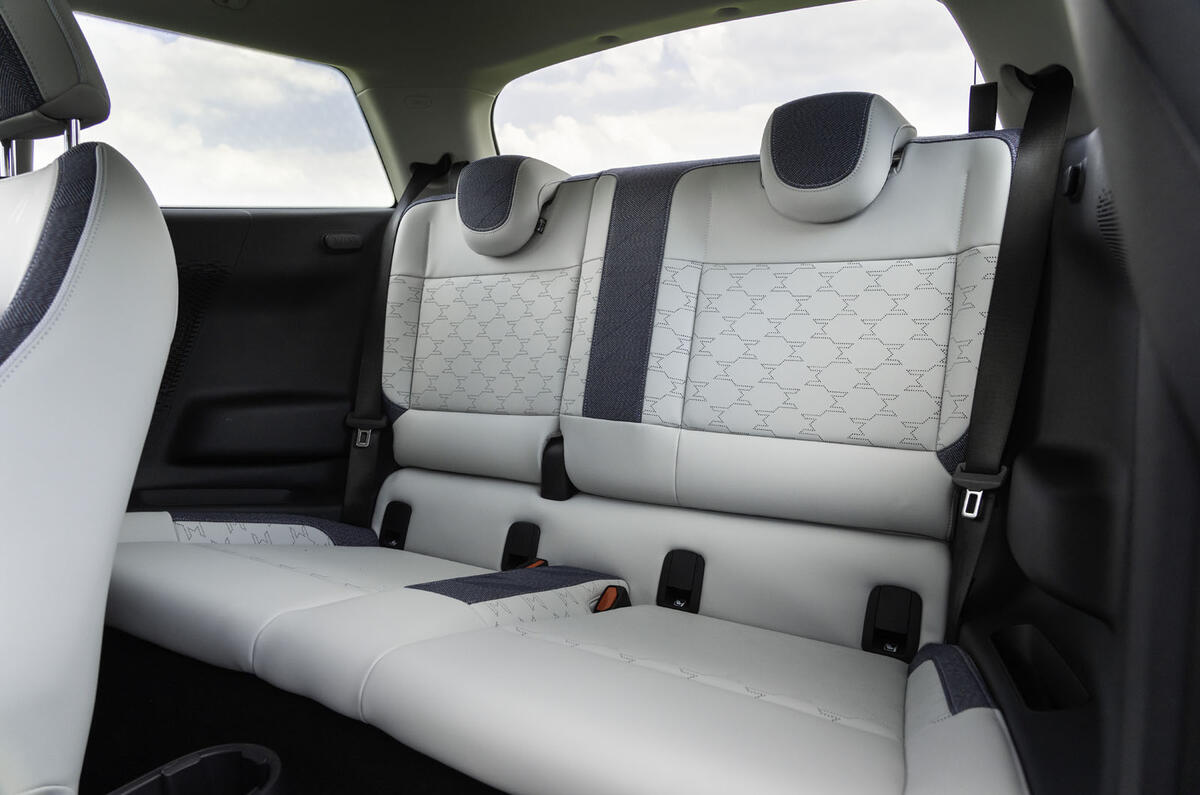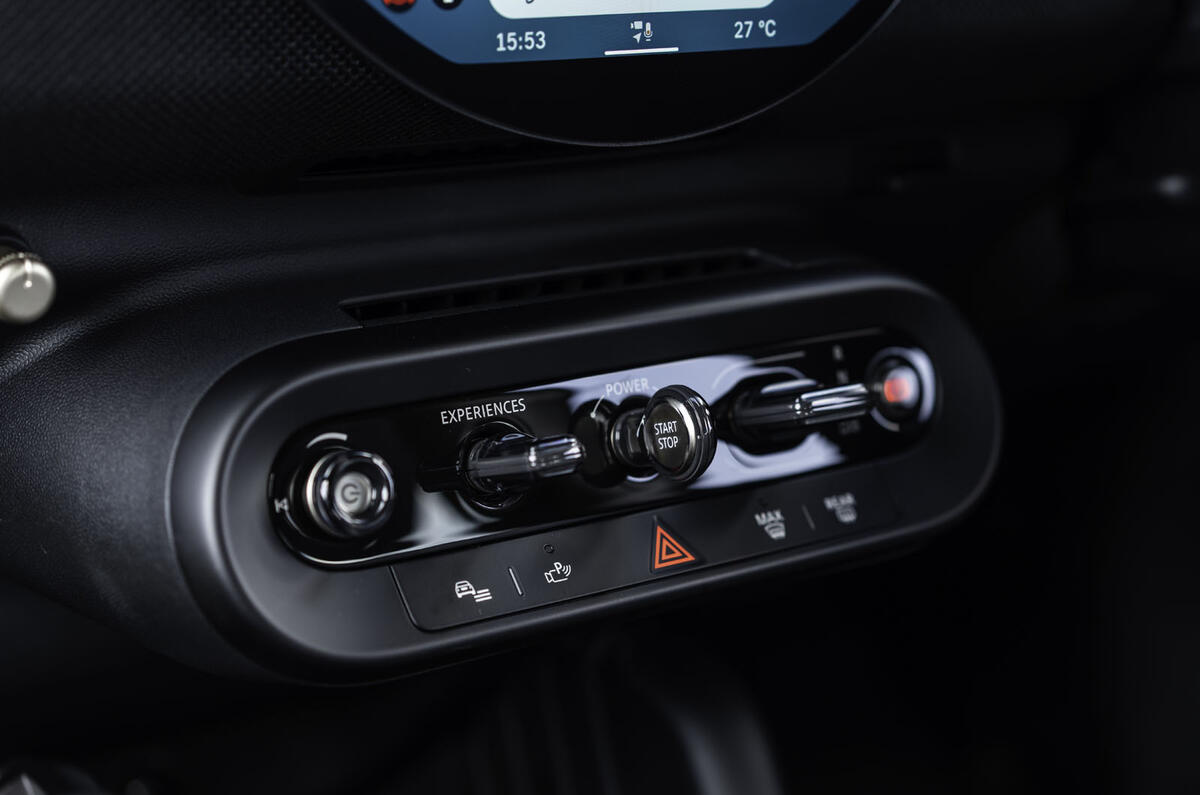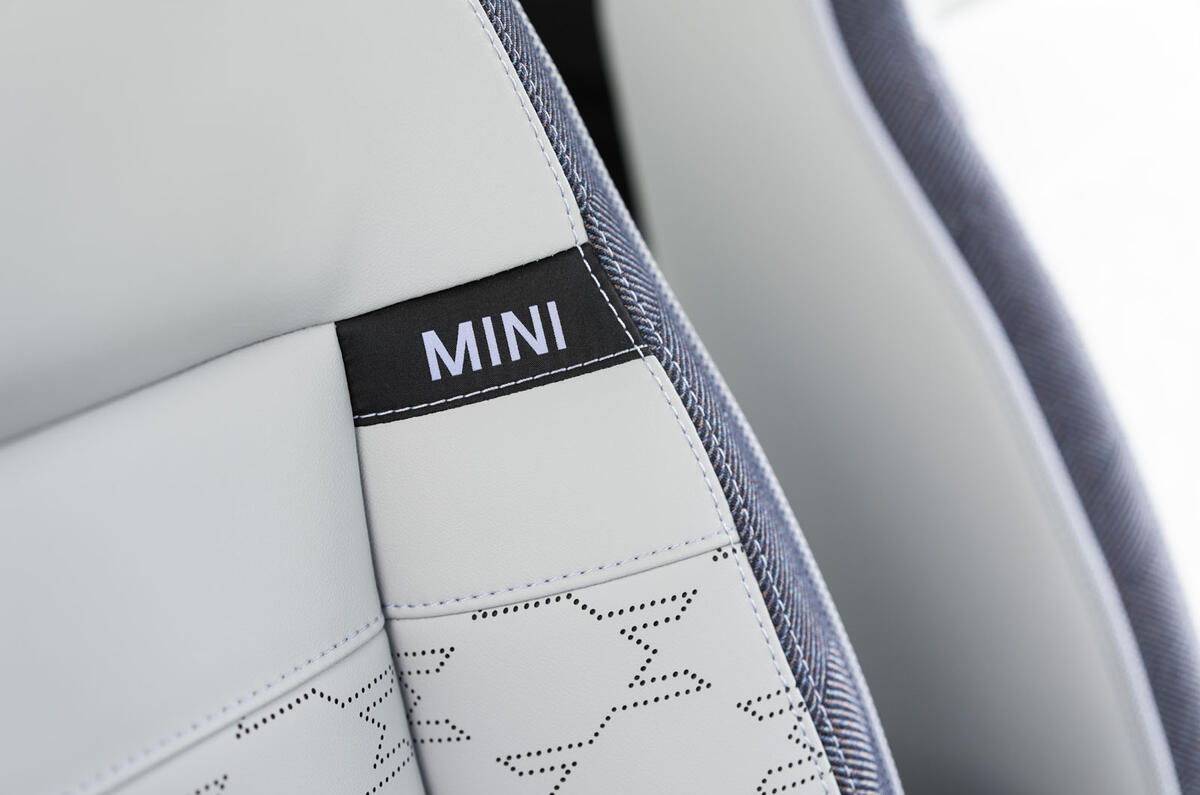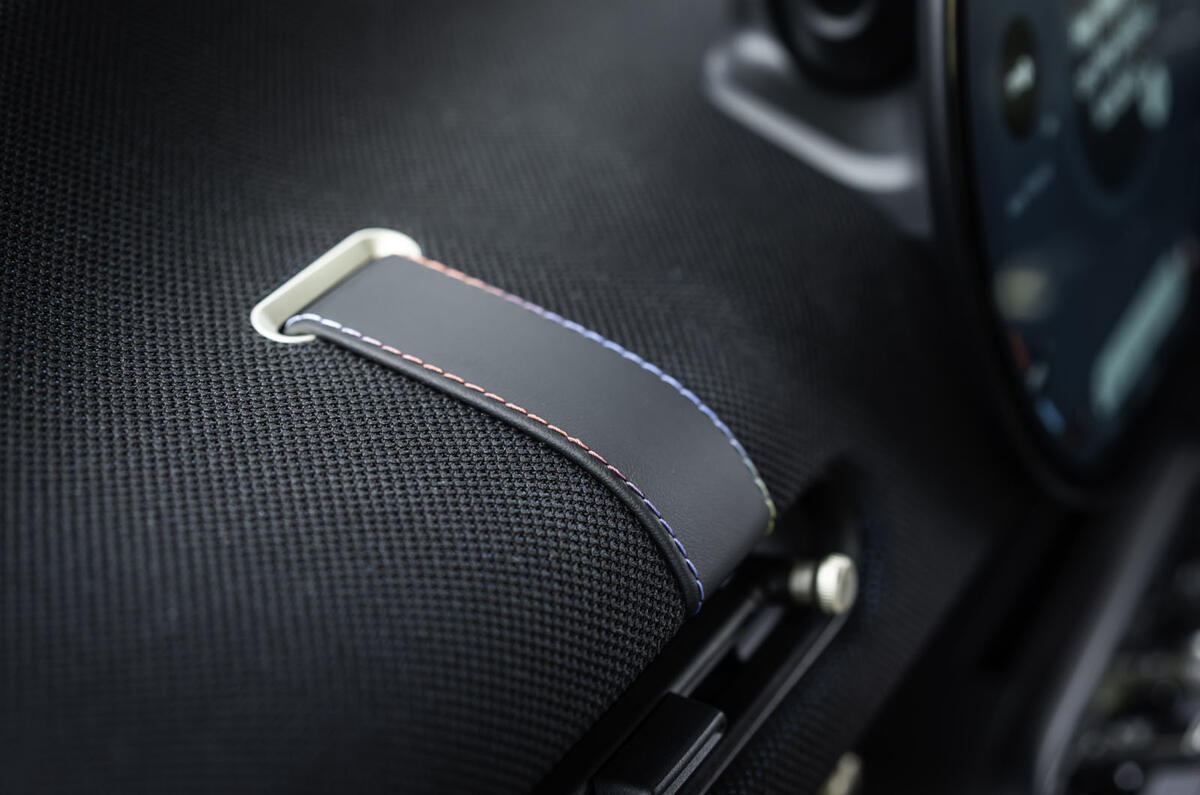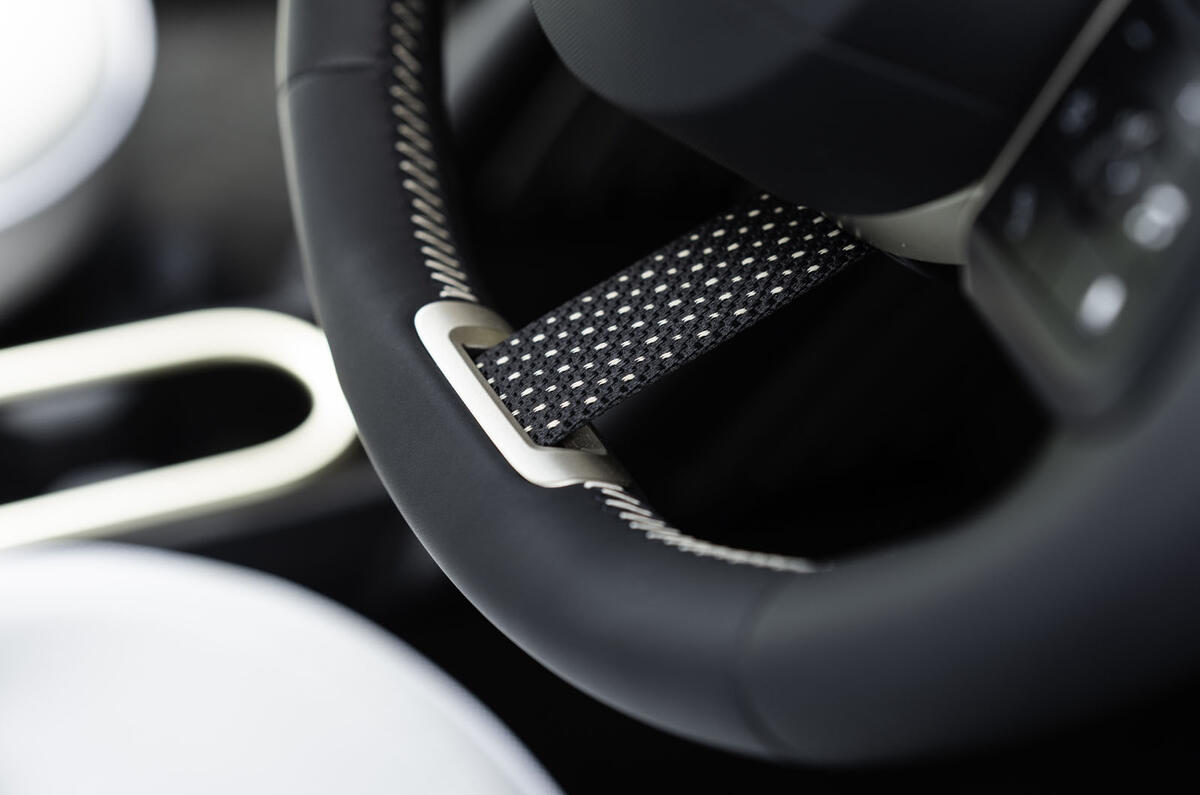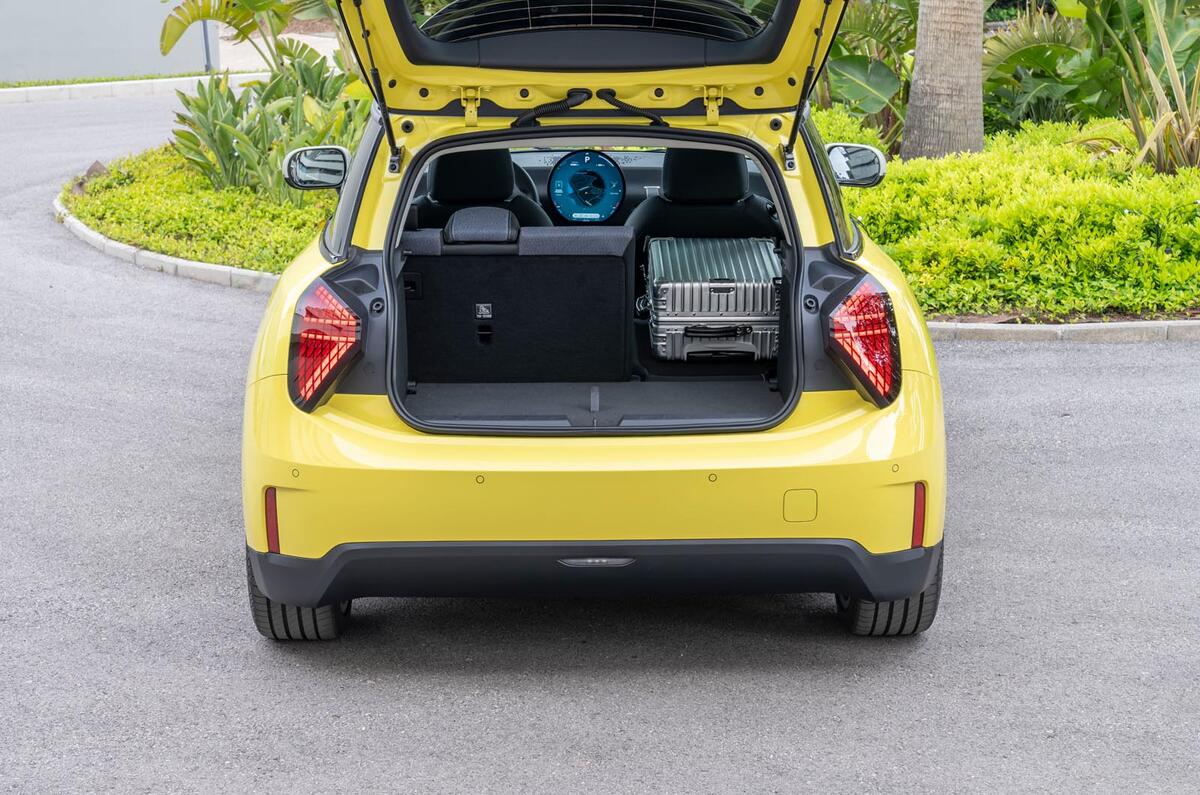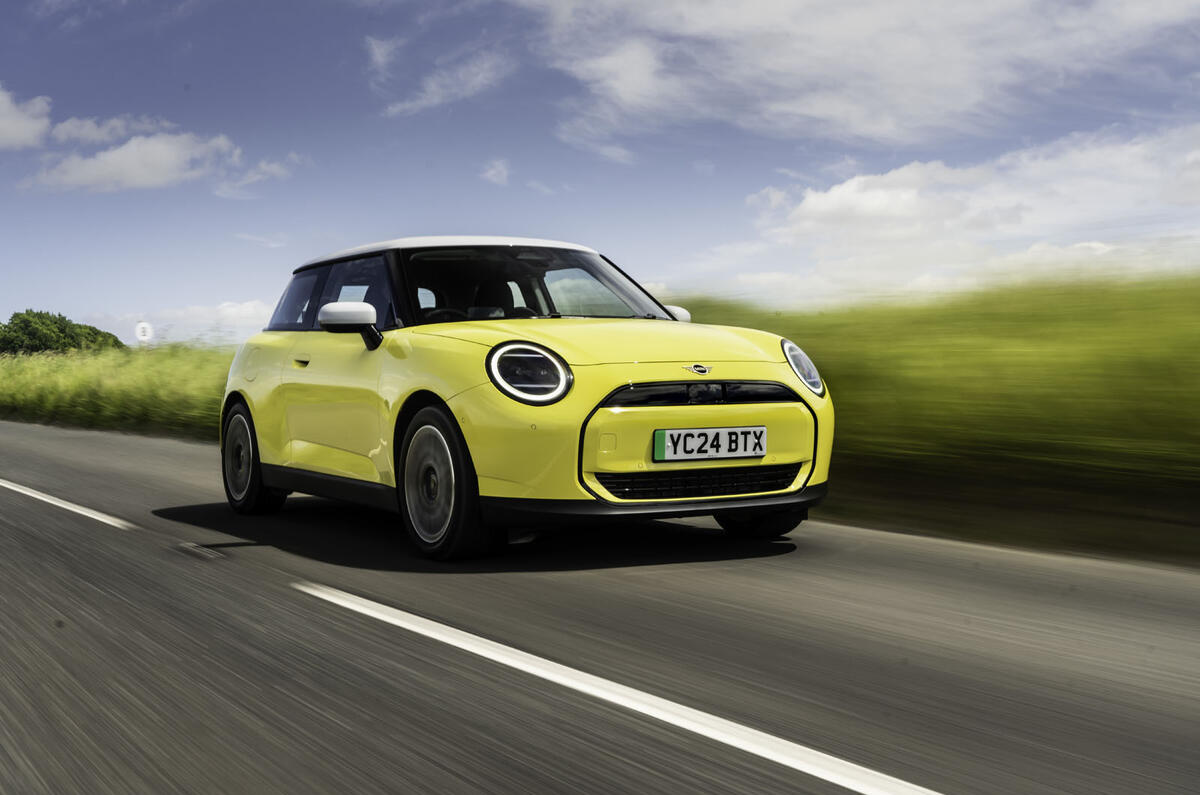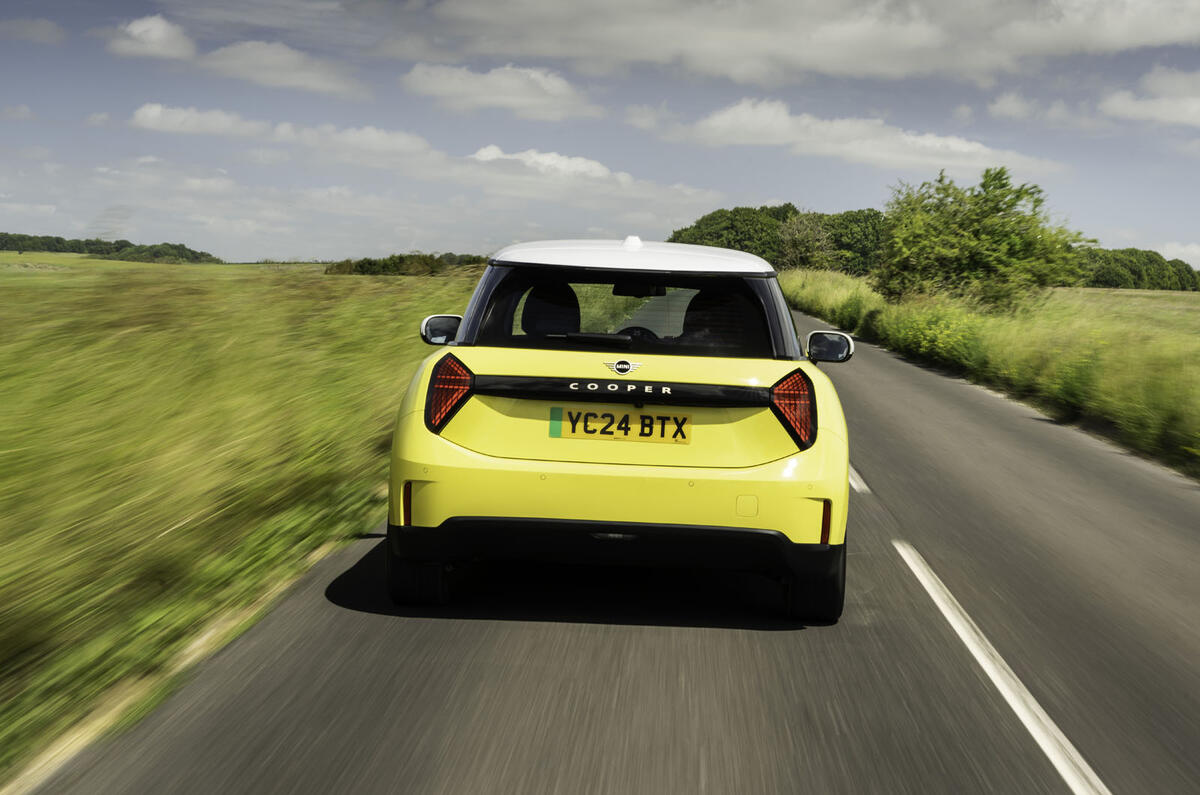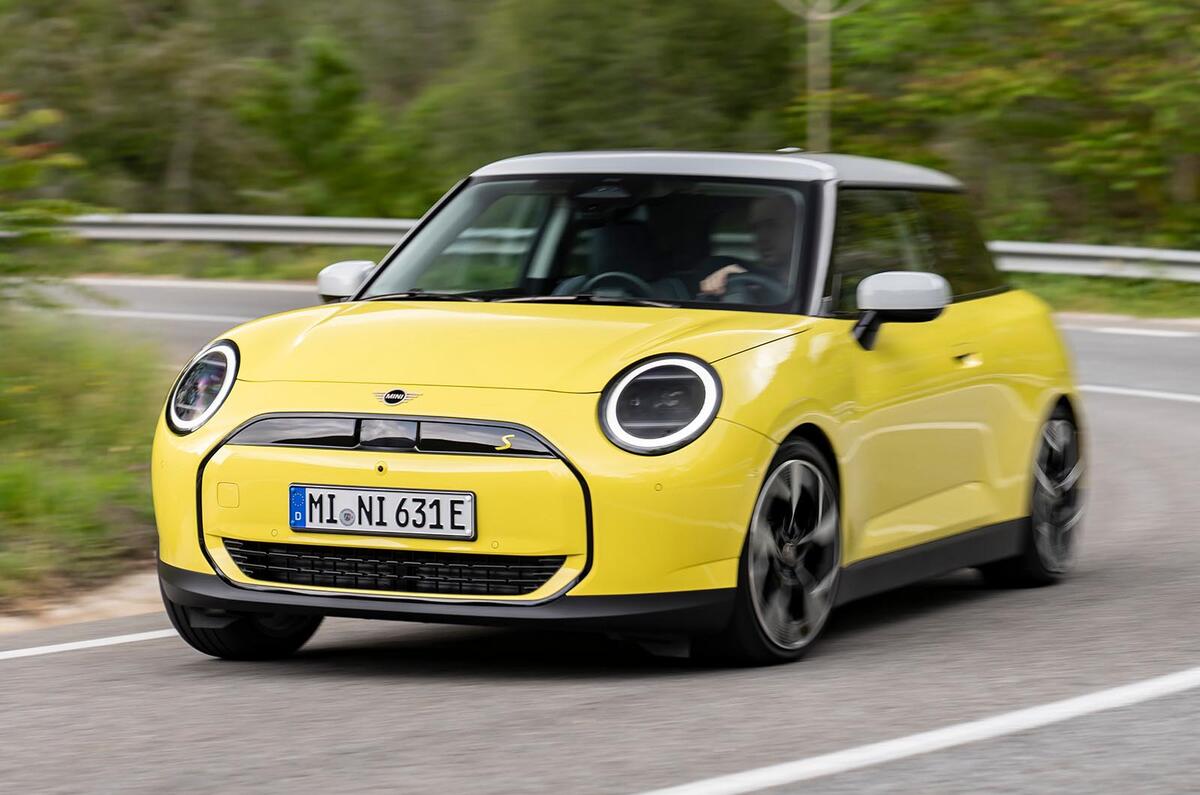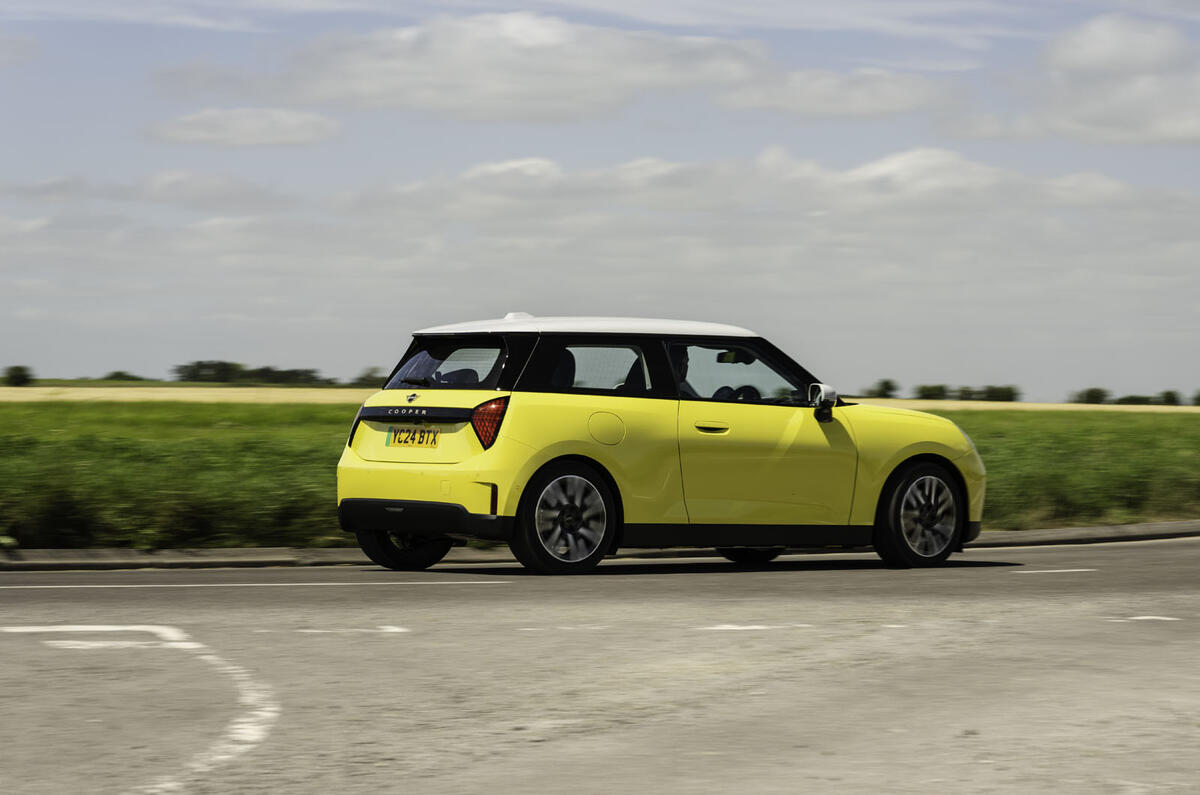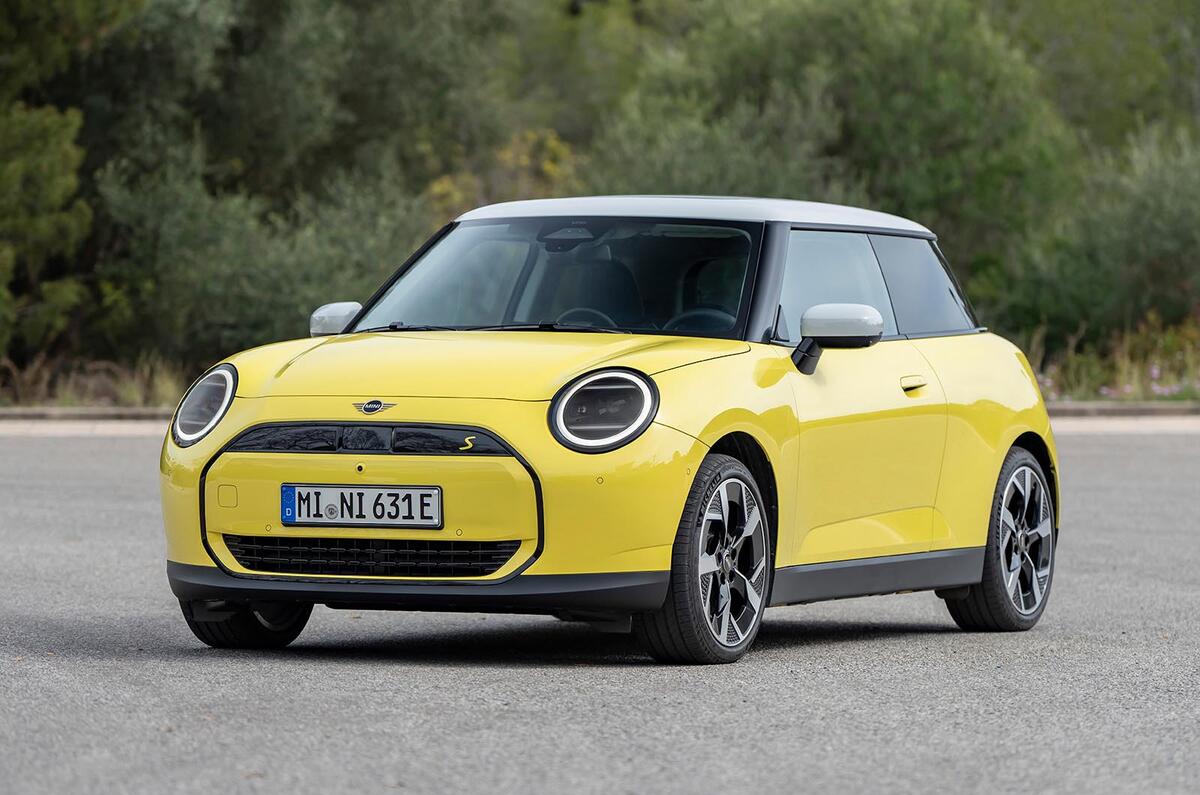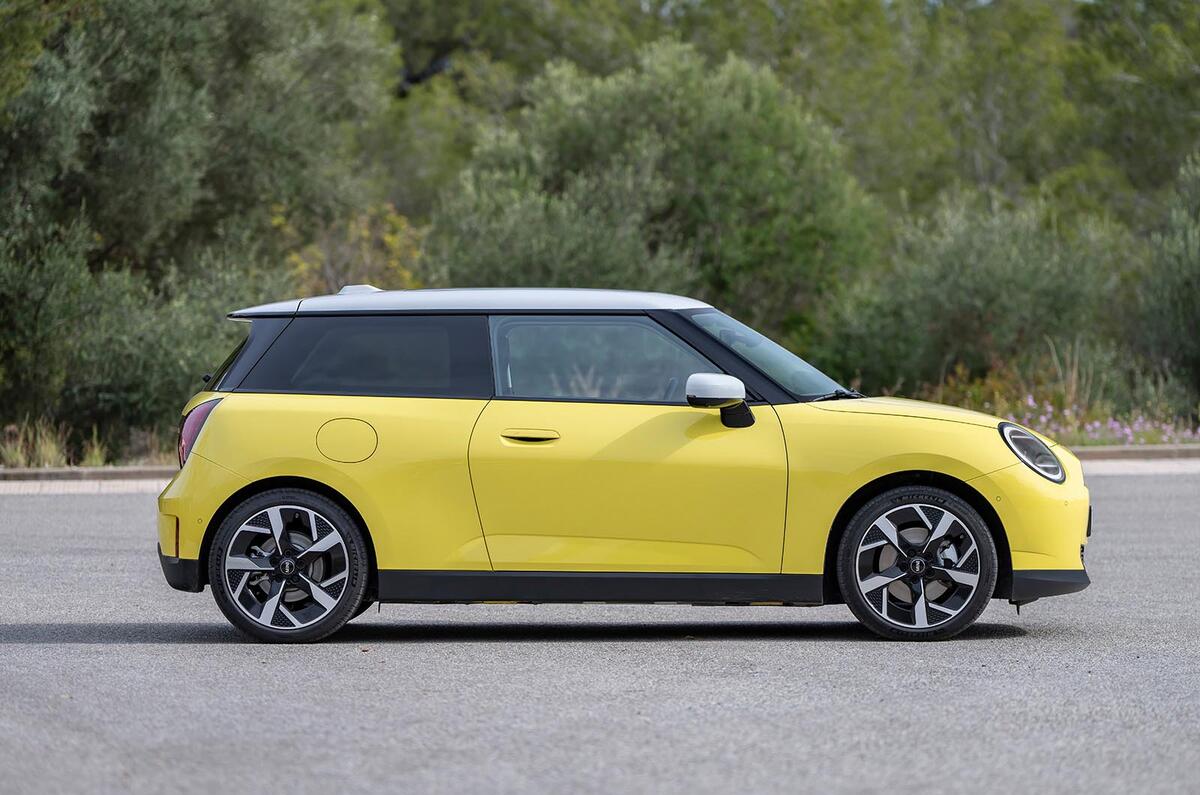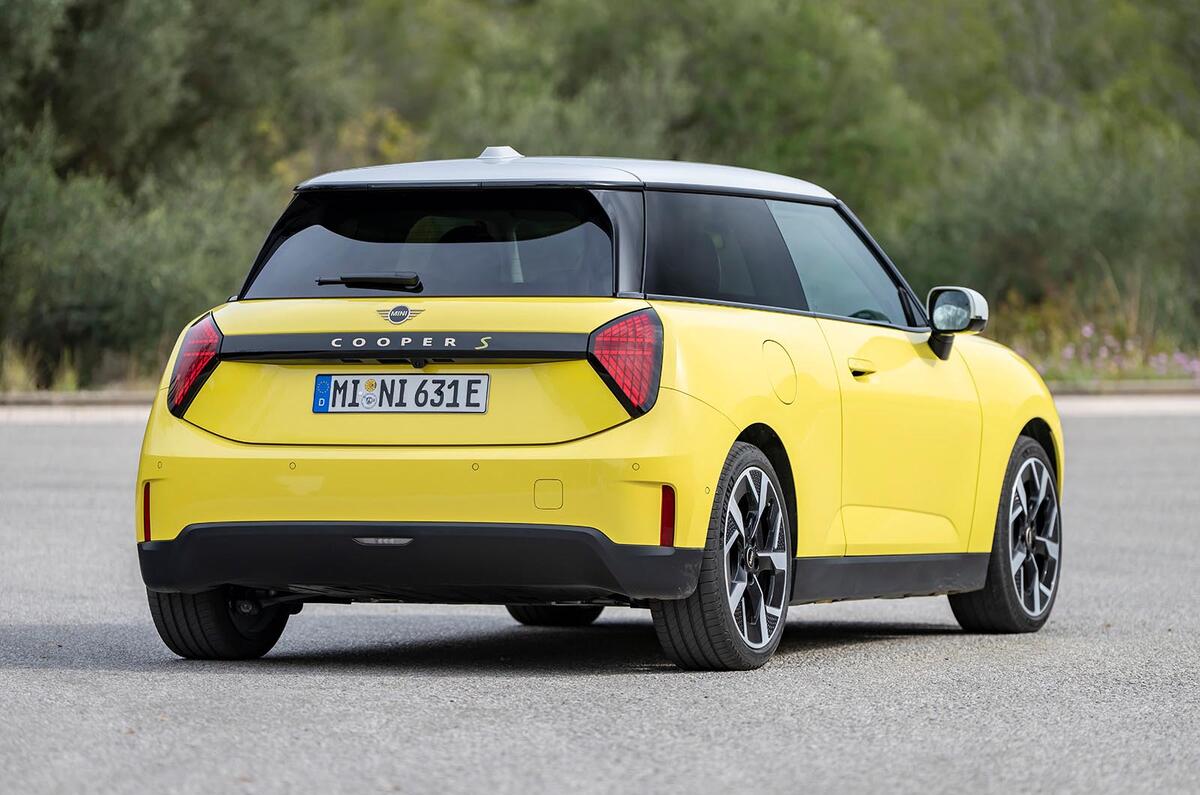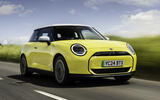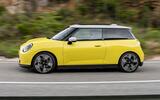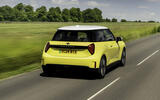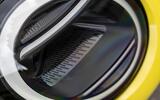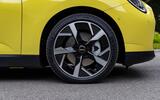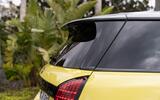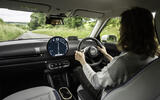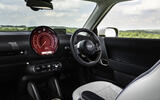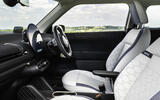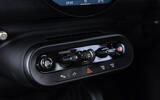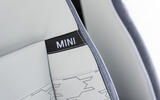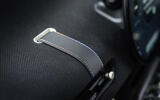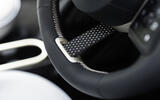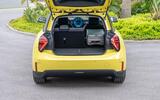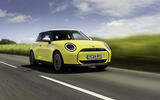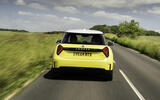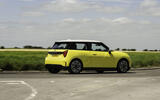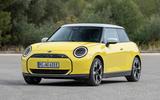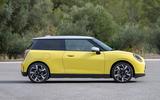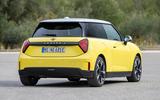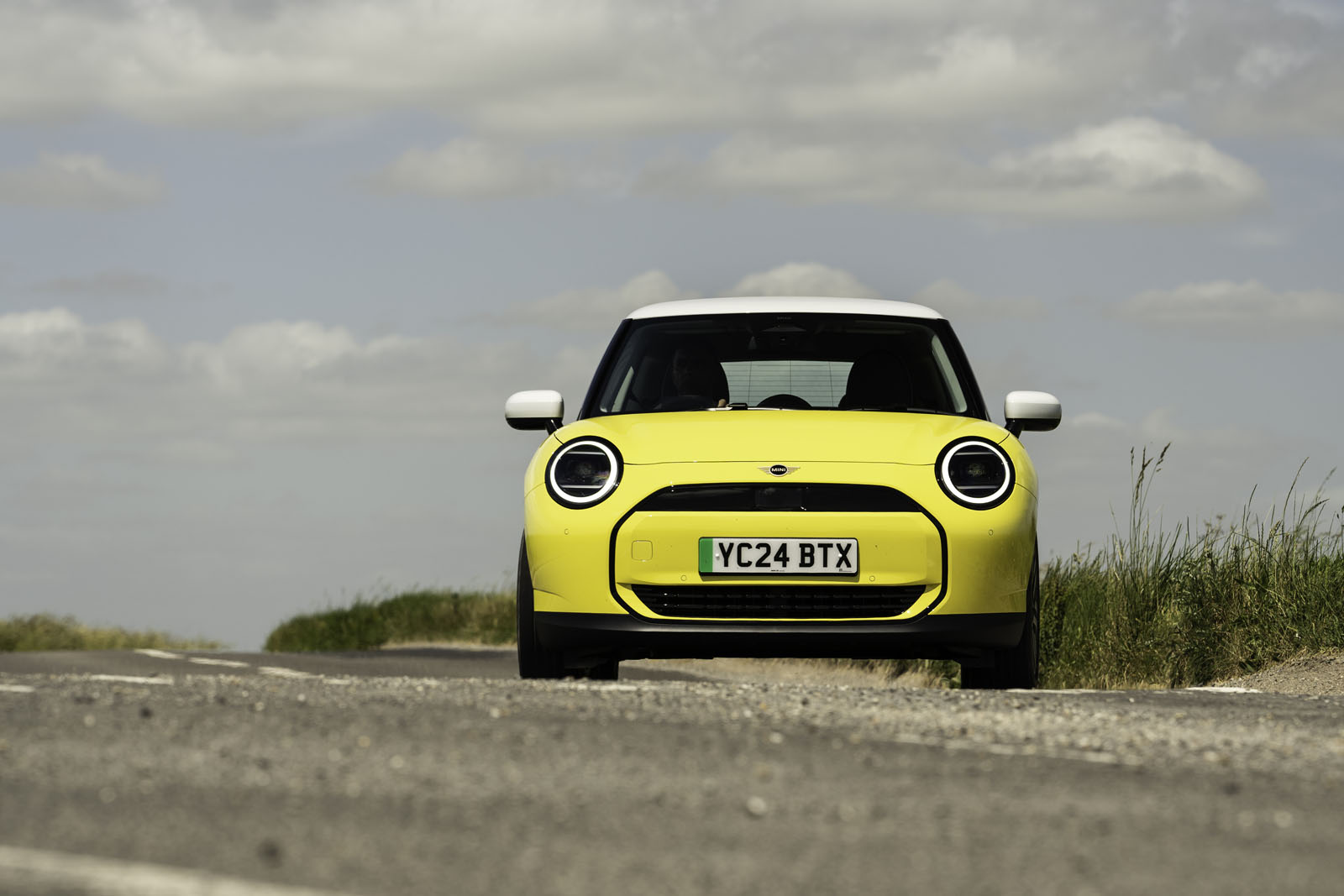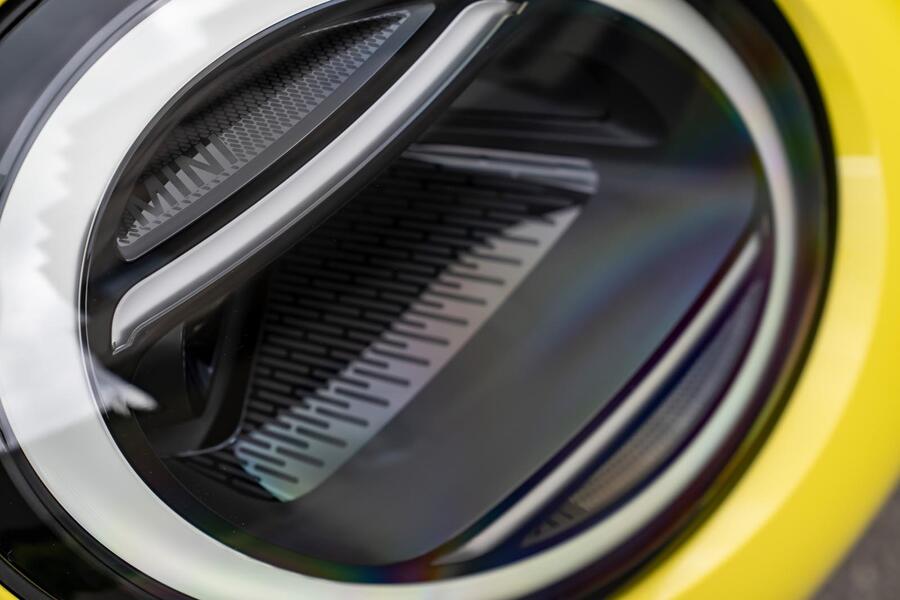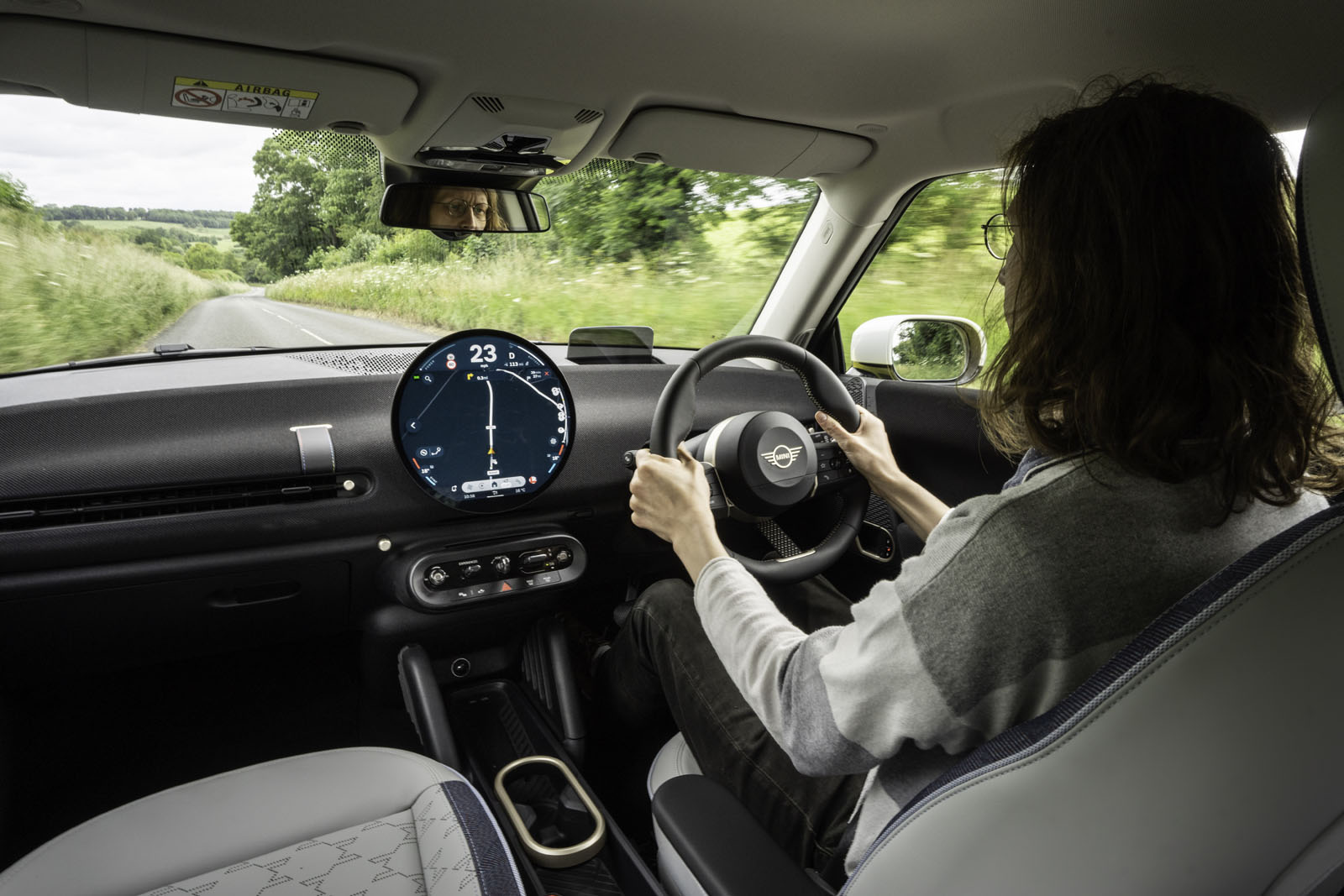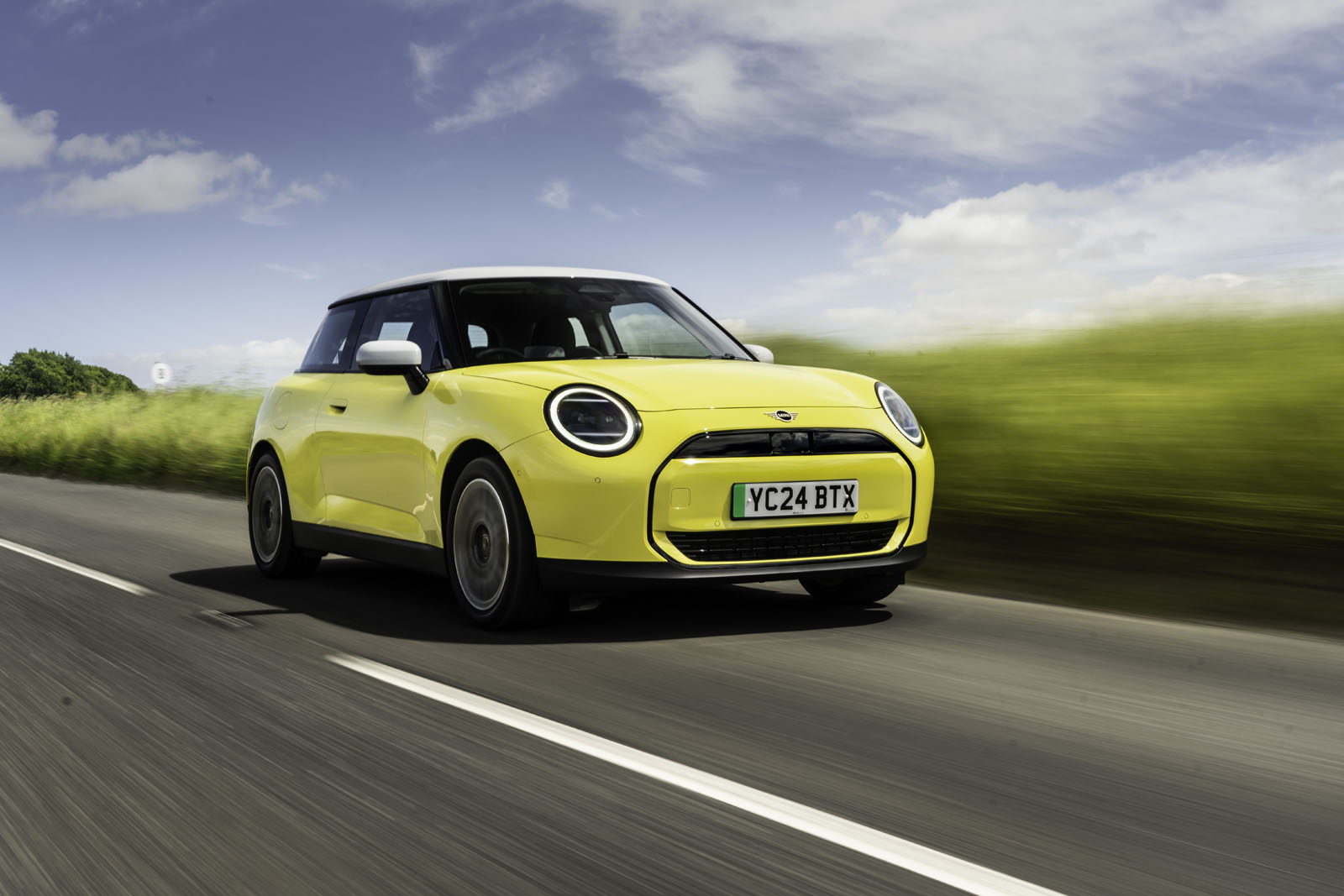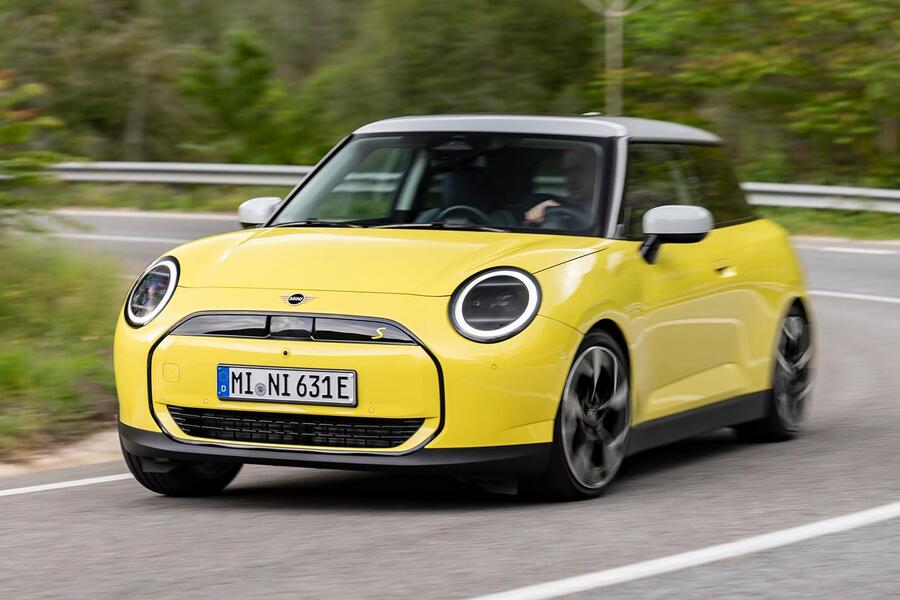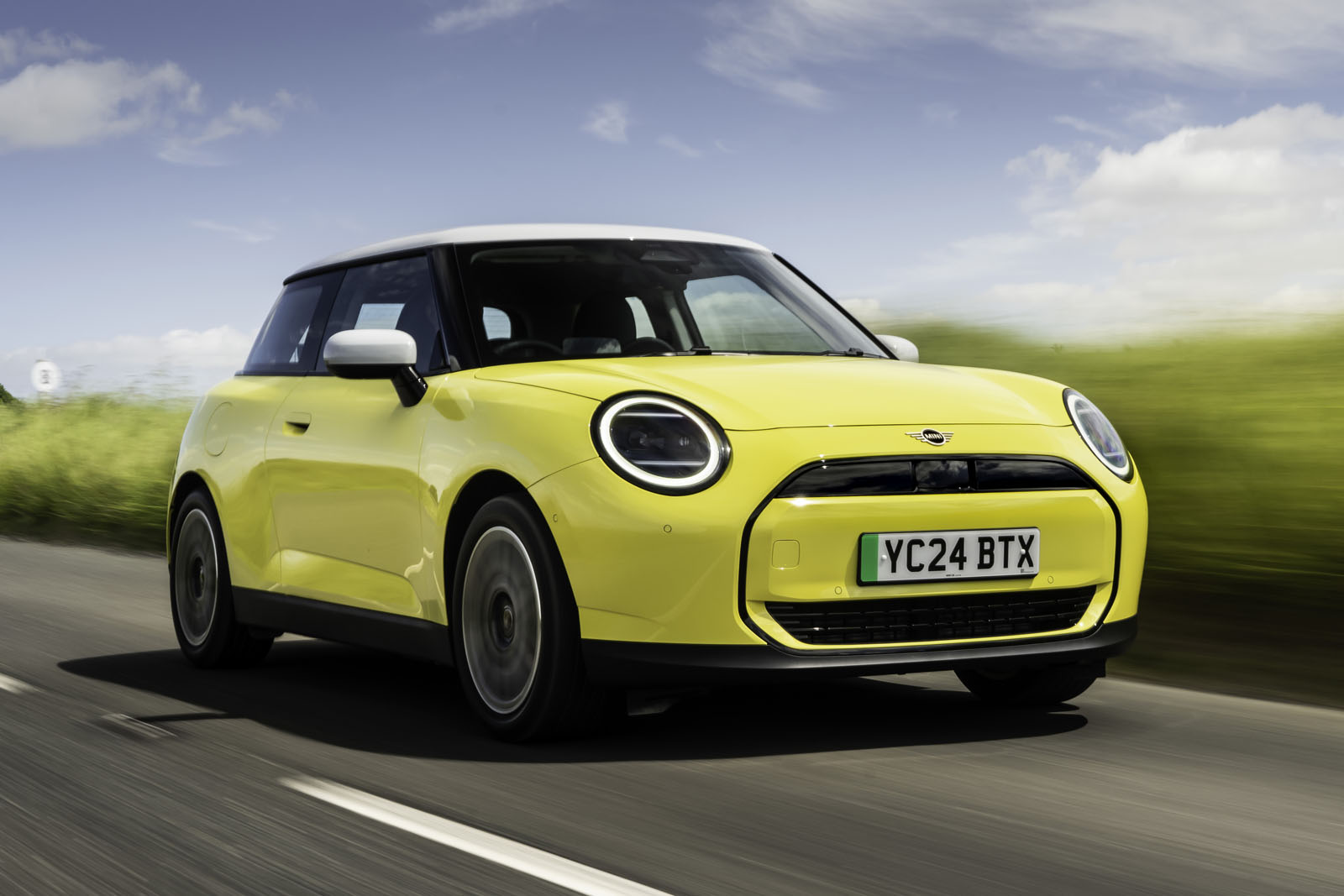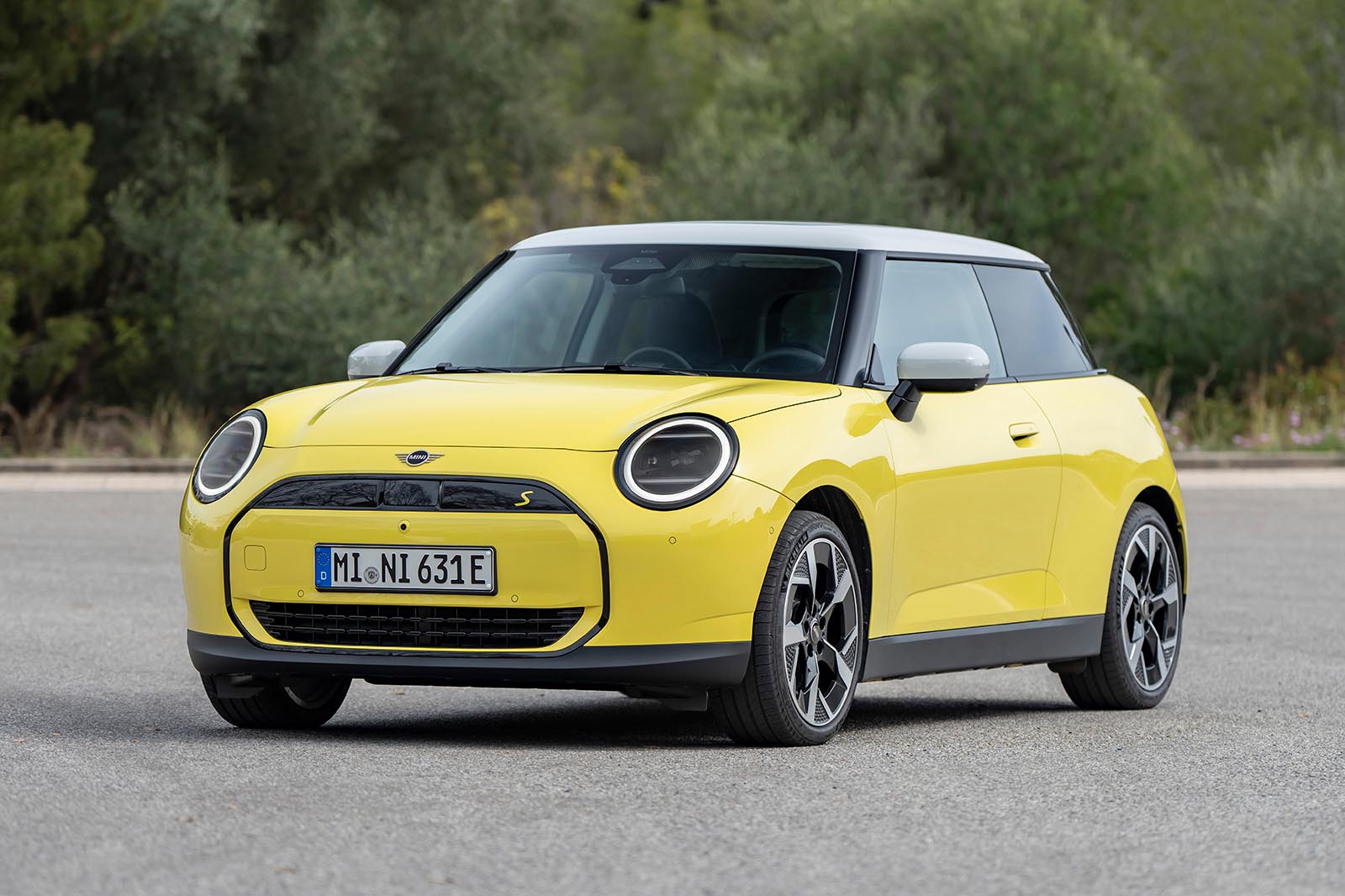An apparent effort has been made to drive up the material richness and perceived quality of the Cooper’s interior, and it comes across even in base-grade Cooper Classic models (above which sit Exclusive and Sport grades - although their impact on the car is mostly cosmetic, with technical content delivered as part of Level 1, 2 and 3 options packs).
Just as they do in the larger Mini Countryman, Mini’s recycled polyester textiles for the dashboard and door panels make a nice tactile addition, and wider fit-and-finish standards are quite high.
The key differences, though, concern the car’s driving position and its instrumentation layout. On the former side, because Mini’s new chassis carries its lithium ion drive battery sandwich-style under the cabin floor rather than within the negative space of the transmission tunnel and under the back seats (as the old Mini Electric did), you sit an inch or two higher at the wheel than Mini regulars will be used to. The Mini has lost some of that ‘bum-on-the-deck’ trademark sporting feel, though it must be said that you still sit very low for a small hatchback.
Passenger space in the second row is slightly better than in the old Mini Electric: it’s just about fit for adults of average height over short trips, or for younger kids – although fitting child seats back there would be tough despite the presence of Isofix points.
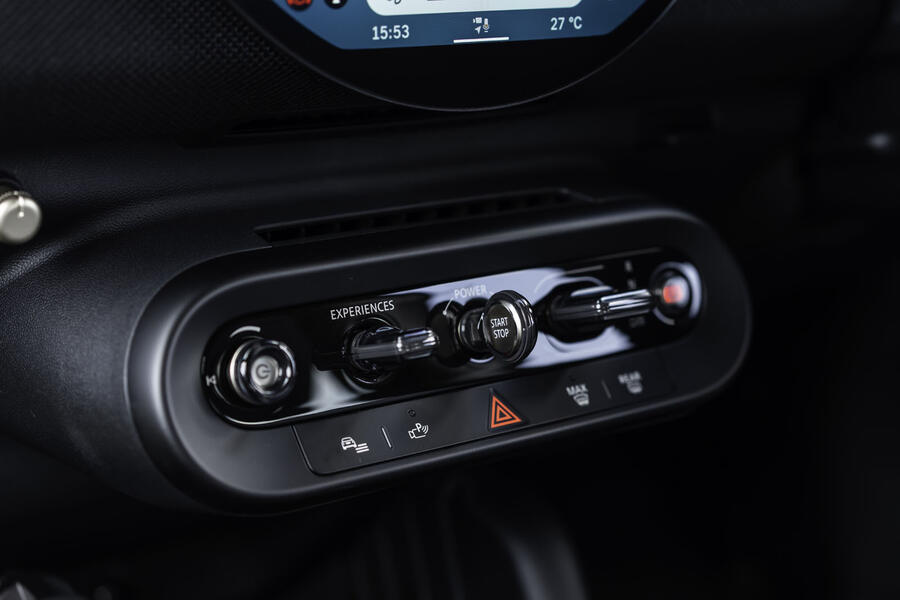
Back up front, there’s no conventional driver’s binnacle, just Mini’s new centrally mounted OLED circular infotainment display, which conveys instrumentation, navigation mapping and trip computer data, and carries most of the car’s secondary controls.
Whether you get on with this new layout seems to be a matter of personal preference. Some testers wished for at least a small separate instrument binnacle, others enjoyed the unobstructed view through the windscreen. In any case, the Level 1 pack (£2000 on the Cooper E, standard on the SE) includes a head-up display (though it is of the inferior flip-up kind).
The central screen itself has cheery and crisply rendered graphics, and its core functions work reasonably well thanks to some useful shortcut buttons. However, some of its workings are convoluted, and there is the odd bug and a bit of input lag.
Visibility to all quarters is just about acceptable, but the way the rear-view mirror has migrated downwards from the header rail (mounted as it is underneath a pod of forward-facing ADAS sensors) to obscure a fairly large chunk of the slightly letterbox-like windscreen can make tall drivers crane their neck at junctions and roundabouts in order to see around it.




